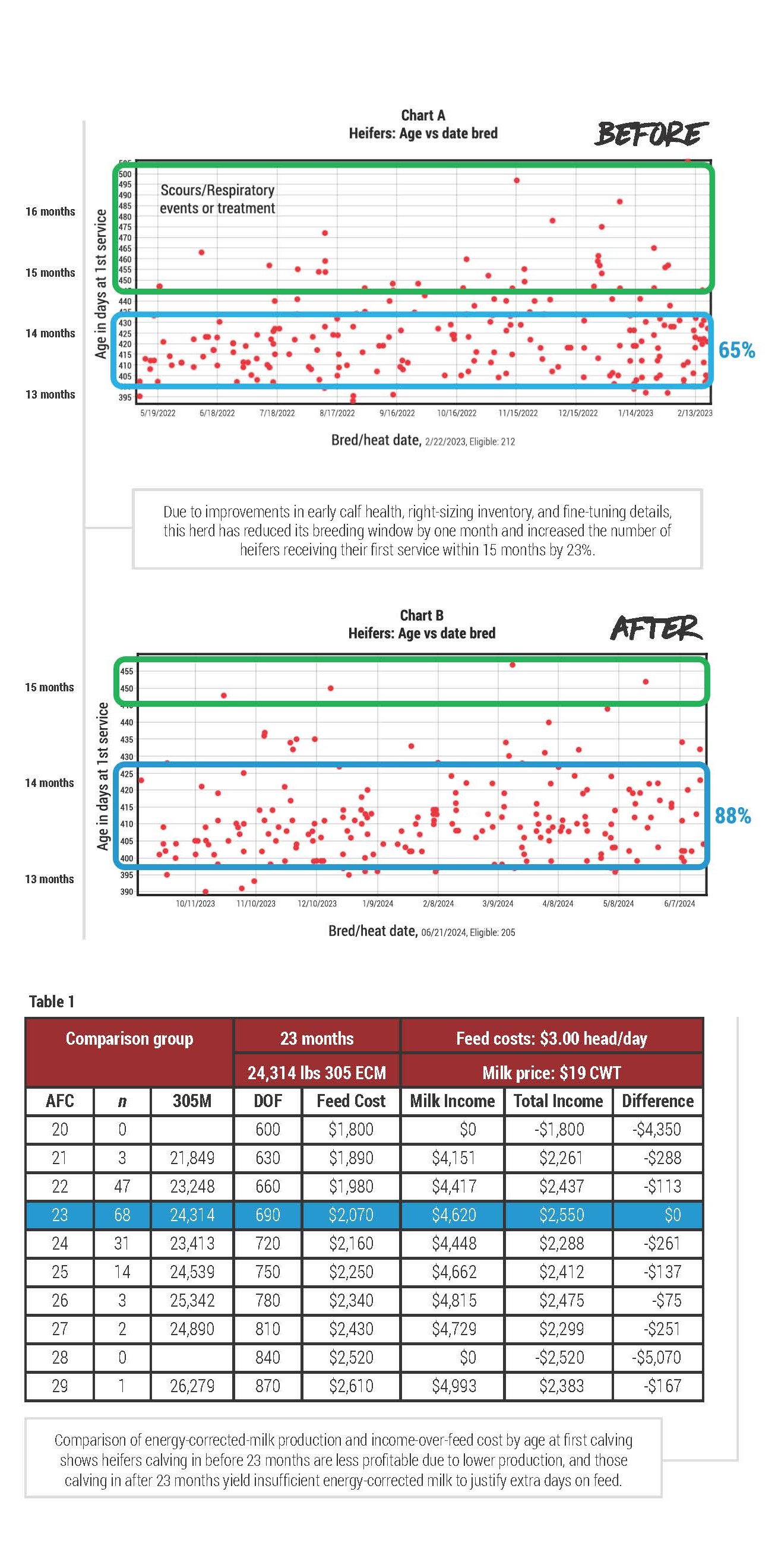Author: Kelly Sporer, Ph.D., CentralStar Records Analysis Consultant
The first day, week, and month of a calf’s life are critical in determining their future productivity and health. Research has repeatedly shown when calves face health challenges early in life, there are long-lasting effects on reproduction and production.
Over the past two and a half years, I have worked closely with a Michigan dairy that has had a long-standing relationship with CentralStar using Select Sires genetics. Despite impressive milk production and quality in this herd, we identified concerns around heifer age at first service. Looking at the data (Chart A below), the age was too spread out, and there was a greater proportion of heifers bred at 15-16 months of age than desired. Digging into the data, we learned these animals experienced early-life health issues such as scours and respiratory infections, often occurring within the first one to two weeks of life.
Once the source of the problem was identified, several changes were implemented including improvements to the heifer-nutrition program, and the addition of calf-health products to improve gut health and immunity. Additionally, the farm put additional focus on equipment sanitation and increased the frequency of calf-health checks. These measures aimed to reduce the health issues that were delaying the heifers’ readiness for their first breeding.
Since implementing improvements, including efforts focused on breeding strategy and inventory management, the results have been remarkable (Chart B below). The percentage of heifers receiving their first service within the optimal 30-day window increased from 65% to 88%. This improvement directly correlates with fewer heifers experiencing health setbacks in their early days. Moreover, our data shows that heifers bred within this 30-day window had a 71% first-service-conception rate, significantly higher than those bred later.
Further analysis revealed that when the age at first service is more spread out, so is the age at first calving, negatively impacting productive life and longevity in the herd. Today, most of the heifers calve at 23 months, which has proven to be the sweet spot for maximizing energy-corrected-milk production and overall profitability on dairies I work with. Both heifers calving in earlier than 23 months and later than 23 months incur additional feed costs without sufficient milk yield to justify the expense (Table 1 below).
To quantify this, I used a calculator developed by CentralStar Regional Consulting Manager Emily Middleton-Gyomory that compares the cost of extra days on feed compared to milk income. In this instance, it showed that heifers that calved after 23 months of age were not producing enough milk to cover the extra costs, leading to financial losses for the farm.
This real-farm example underscores the critical importance of early-life management. By reducing or eliminating health incidences in the first month of life, we can significantly improve heifer-reproductive efficiency, decrease non-completion rates, and enhance overall herd productivity and profitability. Focusing on early calfhood health and management can transform their future productivity, proving that day one, week one, and month one truly matters.
To learn more on this topic, listen to my presentation during the Michigan State University Extension Heifer Management Webinar Series. If you would like help on your farm, reach out to me at [email protected] or talk with your local CentralStar Consultant.

